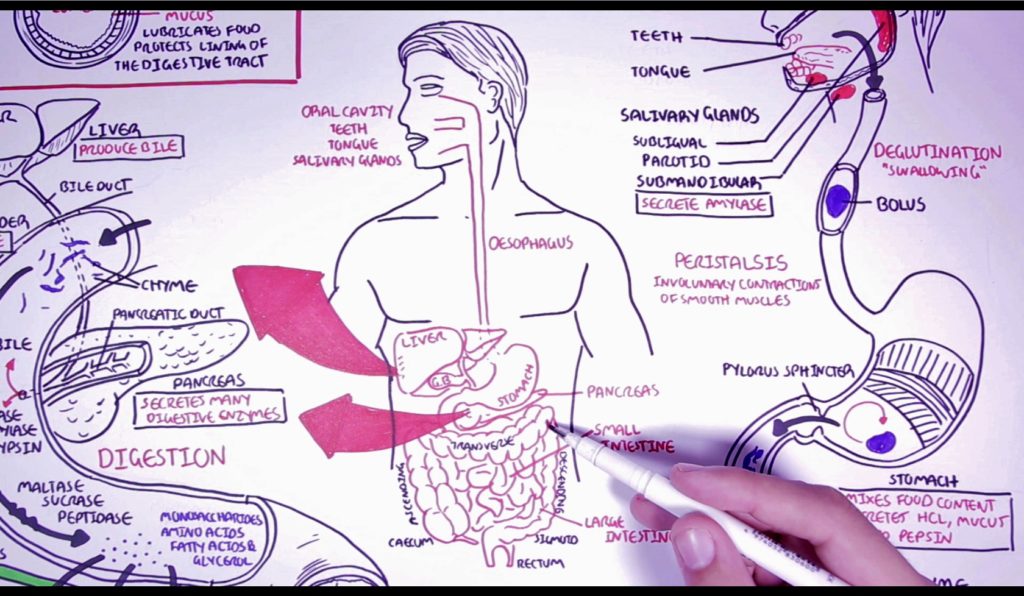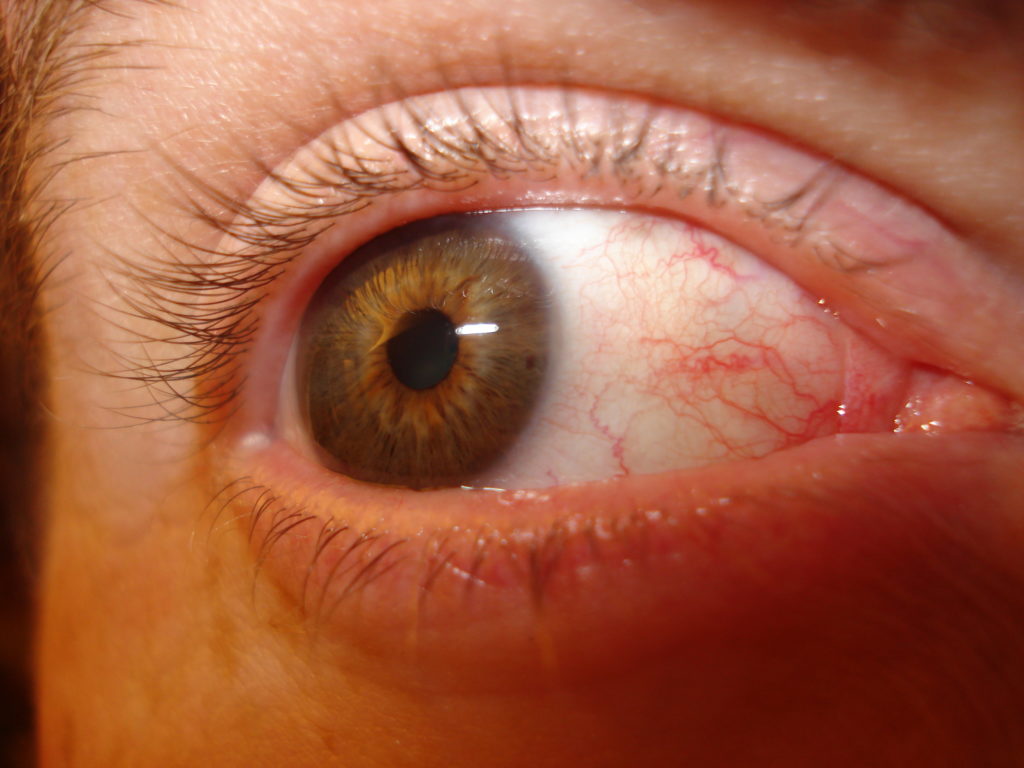
A diagrammatic overview of our digestive system, by Armando Hasudungan. Imagine if our organs were actually labelled like that…that’d be handy.
Welcome to the first in a four part series on the digestive system.
You might know it as the alimentary canal, or maybe just ‘the food tube’. Whatever you like to call it, it can be easy to ignore the digestive system and all of its complexities – that is, until something goes wrong with it. So why not be ahead of the game and learn a little more about our insides?
Basically, the digestive system is a tube with two ends. Food, rich in nutrients, enters one end of the tube, whereupon our body works hard to extract all it can. After some days, the ‘food’ exits the other end of the tube, largely devoid of its nutrient content.
But that’s only part of the story. We sought the assistance of Armando Hasudungan, a biomedical animator and explanation extraordinaire, to explain what’s really going on in your digestive system.
This series is composed of 9 digestion-related animations, which will be broken up into four blogs.
Today’s animation is an overview of the digestive system, a journey from the mouth to the poop chute and everything in between.
Part 1: The Digestive System
We hope that wasn’t too much to swallow! But if you’re still hungry for some more alimentary enlightenment, here’s some further food for thought:
Your body is composed of 100,000 billion cells – each of which need food to keep functioning. Thankfully, these guys aren’t snacking on breakfast burritos. They only need extremely tiny portions of food, broken down by our teeth, acid and enzymes, which are in turn fed to them by even smaller capillaries – just one cell thick.
These food-bearing capillaries have a massive delivery area, nourishing cells at the furthest reaches of our bodies. It’s not an easy job, when you consider the unimaginably tiny scales they are working at. But these guys are responsible for satiating brain cells, eye cells, hair follicles and bone cells – essentially keeping our body running.

Breakfast burrito in the eye. Photo by Christopher Porter, Flickr.
Of course, our bodies are only so good at breaking down foods. As you now know, our mouths have amylase, an enzyme to break down starch. But if you were to try eating cardboard or grass or sand (which we do not recommend) your body would not extract one iota of nourishment.
Of course, there are many single-celled organisms that can eat ‘cellulose’ – the structural chemical that makes cardboard and grass inedible. There are even bacteria that can digest minerals from rocks.
What’s that we hear you saying? If only we could somehow ingest these bacteria, these single-celled eating machines, and use them to get more nutrients from our food?
Well, evolution has got you covered there. Literally covered. We have more cells of bacteria covering our insides and outsides than we do human ones. In fact, for every human cell composing your body, there are 10 bacterial cells in and on you. And you call yourself an individual, pah! Yes, we have billions of bacterial cells in our digestive systems, with a concentration in our large intestine, which also goes by another name: the colon. But more on that later.
Over the coming weeks, our ‘Hungry Microbiome’ animations are going to focus on carbohydrates, their breakdown by our microbiome (the bacteria in our guts), and the various benefits of butyrate – the molecule released by our little colonic companions.
We can’t wait! In the mean time, you can see more of Armando’s videos here.


15th July 2015 at 4:11 pm
Digestion enzymes are very vital in our bodies. We need to take digestive enzymes because Enzymes Are Vital to Human Survival,Our Typical Diet & Cooked Foods Drain Our Enzyme Supply,Even Some Raw Foods Contain Enzyme Inhibitors,Many Factors Cause Our Bodies to Use up Enzymes Faster and Enzyme levels drop significantly with age.Thanks for sharing with us.
3rd February 2015 at 3:57 pm
leaving ?devoid of any nutrients? needs refinement methinks. Until it reaches final destruction all is available to next stages. Insects, Plants, Bacteria, Fungi, down to the Mycobacteriophages. So devoid?
3rd February 2015 at 4:27 pm
Great points, Leon. Thank you for your suggestion.
Jesse,
CSIRO Social media staff
1st February 2015 at 7:05 am
Reblogged this on Endometriosis Wellbeing and commented:
There is way too much misinformation out there with no scientific basis. Make up your own mind about the fad diets out there. Learn how your digestive system actually work and make your own decisions.
30th January 2015 at 3:51 pm
looking forward to more of these !
30th January 2015 at 3:56 pm
Thanks Helen, they’re great videos! We have two more installments, if you like:
https://blog.csiro.au/?s=hungry+microbiome
Many thanks,
Jesse
CSIRO Social media team
16th January 2015 at 6:13 pm
Really good explanation for general community education.